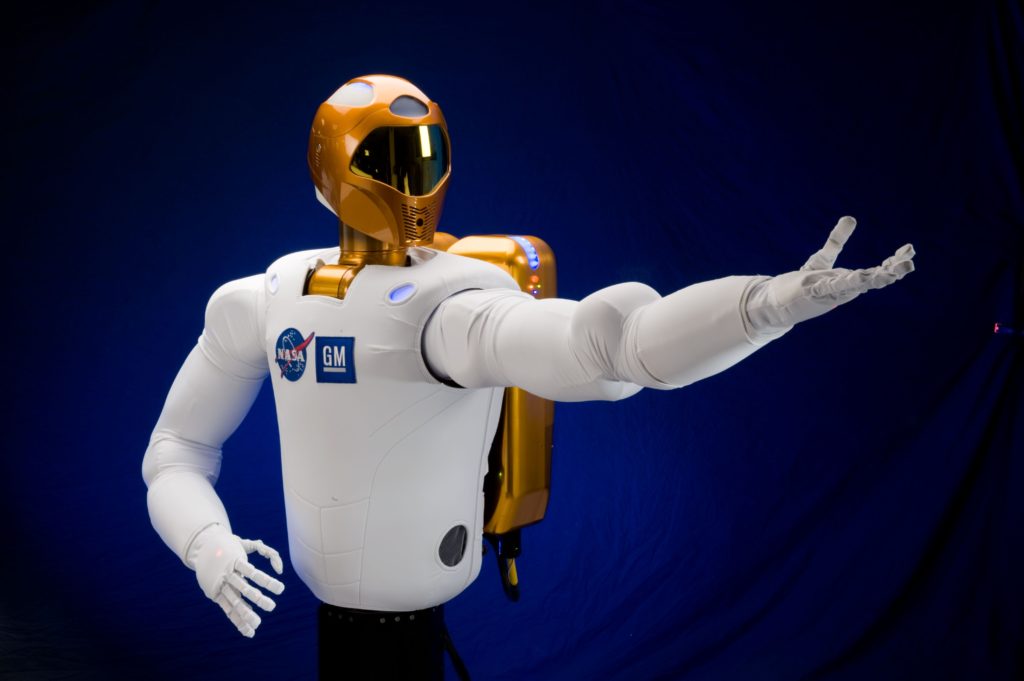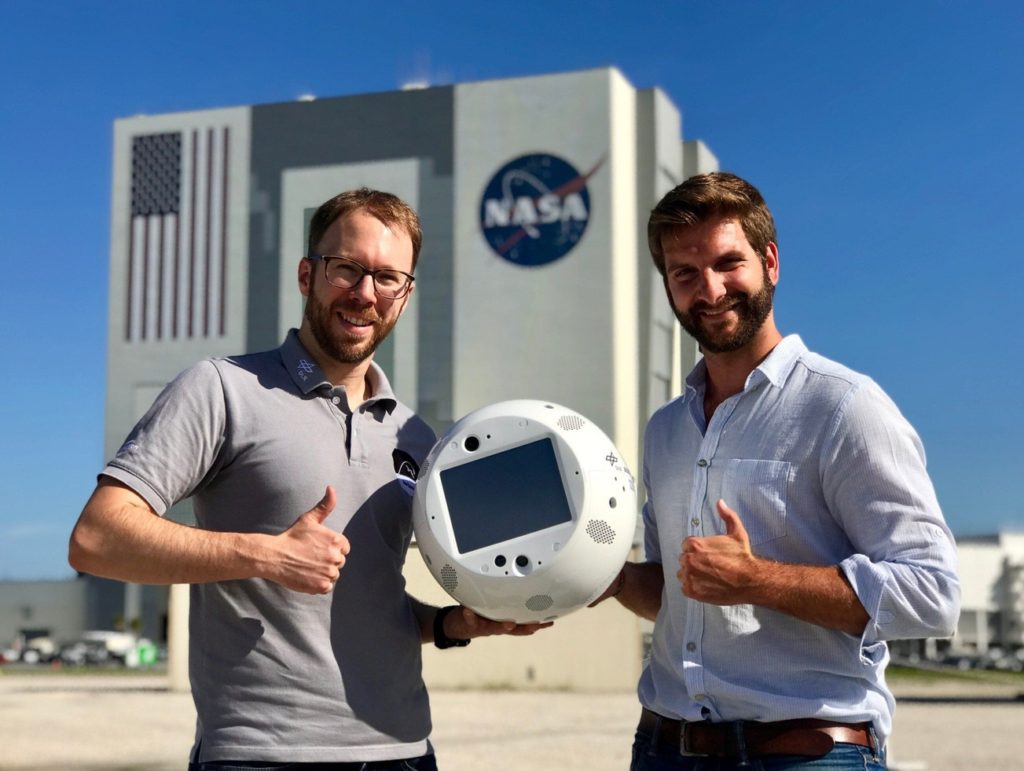The Indian Space Research Organization had created a multitasking female humanoid robot named Vyommitra that can talk and also perform tasks like a human space explorer. ISRO’s Vyommitra’s name is derived from two Sanskrit words Vyoma and Mitra, where ‘Vyoma’ means space and ‘Mitra’ means friend.
Before India’s first human spaceflight mission, a half-humanoid will make a solo trip to space as part of the test flights that will be undertaken ahead of the ambitious launch to help decide whether the trip is safe enough or not. ISRO is also developing a crew module and rocket systems that will ensure the safe travel and return of the Indian astronaut.
Different countries have successfully launched humans into space. They did so after having used animals for conducting trails of their rockets and crew recovery systems, while ISRO will use a humanoid to test the efficacy of its GSLV Mk III rocket to transport a human to space and back to earth.
Vyommitra was built for ISRO’s first unmanned Gaganyaan mission. The mission goal to ensure a successful manned space flight and it also reflects the rigor of deep safety measures of ISRO.
Vyommitra was first unveiled on 22 January 2020 at the Human Spaceflight and Exploration symposium in Bengaluru and there the bot flaunted her conversational skills. “I can be your partner and talk with the space travelers, recognize them and also respond to their questions,” she said in an overwhelming Indian accent.
Vyommitra can talk with astronauts, but she’s not built to be much the same as them. The robot doesn’t have a full human-like body. Vyommitra is called a half humanoid since it doesn’t have legs. It can bend sideward’s and forward only. Her job is to simulate the human functions required for space and to check whether the systems are right. She will complete certain trails and will consistently stay in touch with the ISRO command center.
Vyommitra will go with the Indian space travelers in space missions and will also be a part of uncrewed test Gaganyaan missions to microgravity experiments and also support the astronauts in the crewed missions before the manned spaceflight missions. The Gaganyaan project was announced by PM Narendra Modi in the 2019 Independence Day address, which is an ambitious plan of sending Indians to space.
India not only aims to fly animal’s onboard trail missions, unlike different countries that have completed human space flight. Rather, it will fly humanoid robots for a better understanding of what weightlessness and radiation do to the human body during a long period in space. Vyommitra is specialized in performing both technical & mental tasks. Her basic job is to monitor the spaceflight journey for safety purposes.
Vyommitra is the result of a year-long work of the ISRO Inertial Systems Unit, Thiruvananthapuram, as per IISU Director D. Sam Dayala Dev. ISRO will send the human-looking model in a space capsule around the end of the year 2020 or early 2021 to study how Vyommitra and later the real astronauts will respond to living outside the earth in controlled zero-gravity conditions.
Vyommitra is programmed to communicate in two languages i.e. Hindi and English and perform different tasks. It can mimic human actions, hold conversations, respond to their inquiries, and recognize different people. To be more human-like Vyommitra’s lip movement will be synchronized to mimic speech. It can perform environment control and life support systems (ECLSS) functions, it also adjusts itself to the environment, generates warning when requires, handle switch panel operations, and give environmental air pressure change alerts.
Vyommitra would test the ground for human spaceflight, will be able to use equipment in the flight for safety purposes, would replace carbon dioxide canisters when needed, operates switches, attaining launch and orbital postures, monitor module parameters, detect and give out warnings if environmental changes take place within the cabin. She alerts the astronauts and performs life support operations. She receives and follows the commands sent from the ground station. She gives the astronauts the mental support when they feel stressed and it also acts as an artificial buddy to the astronauts and provides them with useful tips on various issues relating to the spacecraft during the launch, orbital stages, and landing of the manned mission.
Vyommitra isn’t the first robot to go to space. The legless robot called Robonaur 2 was launched to the ISS in 2011, and it performed experiments in a stationary position inside the craft. A Russian humanoid robot, named Fedor, was sent to the ISS in the year 2019 to carry out mechanical functions on the space station. There’s also a Japanese humanoid robot astronaut named Kirobo that was created to entertain astronauts and sent to the ISS in 2014 along with the first Japanese commander of the ISS, Koichi Wakata. The robot was to serve as the assistant to the astronaut in conducting experiments on the space station. Kirobo was equipped with technologies such as facial recognition, speech recognition, language processing, and telecommunication capabilities.

Robonaut 2 
The latest mission with a dummy astronaut was in March 2019, where a mannequin called Ripley was flown on the Dragon crew capsule, was launched on a SpaceX Falcon rocket, and was sent to the International Space Station. Ripley was fitted with sensors to gauge forces that act during a space flight as part of the SpaceX arrangements to send a human into space in 2020 for NASA.
An artificial intelligence robot ball called CIMON (Crew Interactive Mobile Companion) was sent on the ISS by Airbus. Int-ball, a floating camera robot, was placed on the ISS by JAXA space agency.

CIMON (Crew Interactive Mobile Companion)
The humanoid will simulate the human functions that are required for space before real astronauts take off before August 2022. Two preliminary trial flights without a crew will take place with a humanoid. The first trial will be around December 2020 and the second trail will be around July 2021. ISRO is planning to send three Indians to space by the year 2022.
An Indian Wing Commander Rakesh Sharma has been to space and he did so as a cosmonaut on board a Russian shuttle. The Gaganyaan venture aims to send three Indians to space on board an Indian spacecraft launched by an Indian rocket from within India.
Isro has already unveiled the crew capsule and prototypes of the spacesuits that will be used for the Gaganayaan mission. The Geosynchronous Satellite Launch Vehicle (GSLV) Mark III rocket, which will fly the astronauts to space, has already been created and has proven its mettle.
Four men, all of them are pilots from the Indian Air Force, have just been shortlisted for the Gaganyaan project. They will receive training in India and Russia. At the same time, doctors from the Indian Air Force will be sent to France will be trained in monitoring the health of astronauts who will fly to space.
What do you understand by Humanoids?
A humanoid is a robot that is in the appearance of a human being. ISRO’s humanoid being called a half-humanoid because it has a head, two hands, and a torso. However, she does not have lower limbs.

Russian humanoid robot, Fedor 
The essential functions of a humanoid are controlled by the computer systems to which it is connected. The use of Artificial Intelligence (AI) is increasing day by day. Artificial Intelligence can be found in our laptops and smartphones which are derived from voice operating systems. Ex: Alexa, Siri, Bixby, and Cortana are extended in a humanoid.
Note: This topic is useful for both preliminary and mains examination of UPSC and various other competitive exams.
Expected Questions for UPSC exam
1. What is Vyommitra and what is the purpose of its creation?
2. Which organization has created Vyommitra? What is the specialty of Vyommitra?






Very interesting details you have remarked, appreciate it for posting.
Thank you
Hey there, You have done a fantastic job. I will definitely digg it and individually recommend to my friends. I’m sure they’ll be benefited from this website.
Thank you so much